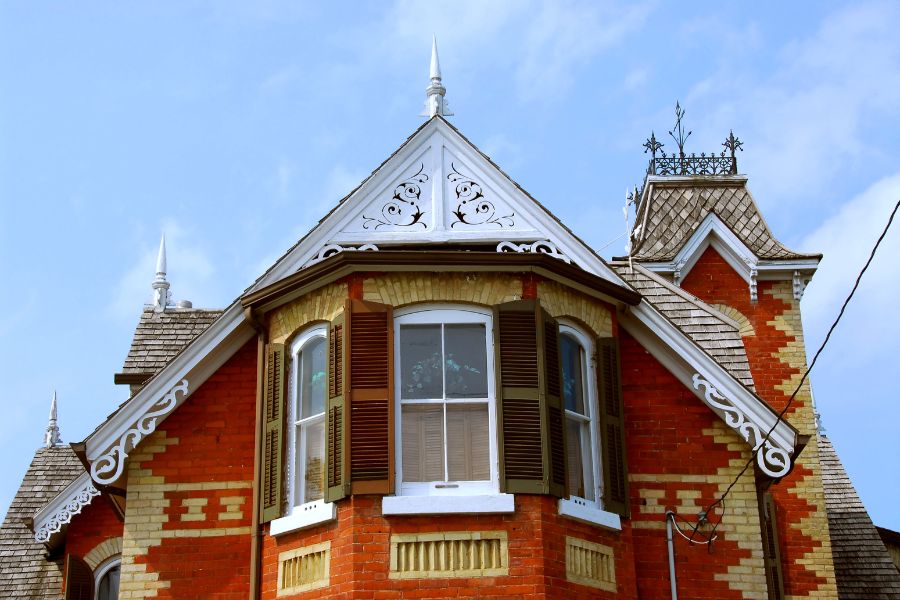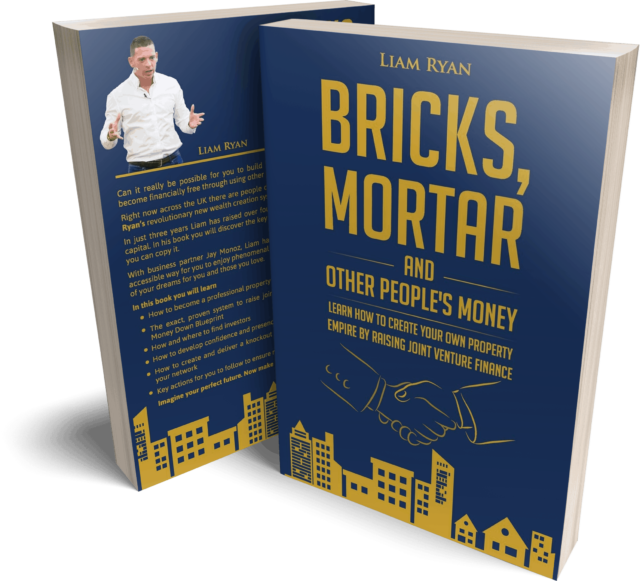Should You Buy a Victorian House as an Investment in 2025?

Victorian houses, like other period properties, are a romantic and enticing prospect to homebuyers and investors alike. A Victorian property can be steeped in history and boast original decorative features and unique quirks you simply don’t get in modern properties. But are Victorian properties a good choice for property investors? In this blog, I will give you all the info you need about Victorian houses as an investment property, their benefits and any potential drawbacks you need to look out for.
Table of Contents
ToggleWhat is a Victorian House?
A Victorian house was built during the Victorian era, which lasted from 1830 to 1900. This is quite a long time so it’s normal to see some variation in Victorian properties, especially towards the end of the Victorian period when the population grew and more housing was required. The 3 main eras in Victorian architecture were:
Queen Anne Revival
Queen Anne-style Victorian properties featured romantic heavy ornamentation in brickwork, oriel and bay windows, gabled porches, and circular towers.
Italianate
The Italianate style was inspired by Italian Renaissance architecture and included low roofs, wide eaves, pedimented or arched windows, and even Corinthian-style columns.
Gothic Revival
This style drew inspiration from mediaeval churches and castles and featured dramatic pointed arches, steeply pitched roofs and front-facing gables.
Thanks to the Industrial Revolution, England was very wealthy during the Victorian period so lavish homes were popular – although the need for smaller affordable housing for the working class led to the creation of Victorian terraced housing which is still very common throughout the UK.
How Can You Tell if a House is Victorian?
There are a few different styles that were popular during the Victorian period, but there are some common features that will enable you to spot a Victorian property easily. They often have steeply pitched roofs, thick exterior walls, elaborate crown mouldings, ceiling roses around light fittings and cornices, high ceilings on the ground floor, bay windows, decorative floor tiles in the entrance and hallway, and wrought iron railings outside. The hallways can often be quite narrow and many Victorian houses have two reception rooms or ‘front rooms’, with the kitchen towards the back of the property. Often the bathroom is at the back of the property too as a later addition, as many Victorian houses, especially terraces, had a separate toilet apart from the main house back in the 1800s. It was also not unusual in Victorian times for a house to be built with a cellar for storage.
Property Value Trends of Victorian Houses
Victorian houses are quite popular in the UK housing market, thanks to their unique architectural style and decorative period features. They are often situated in long-established and desirable neighbourhoods that increase their market value. London and surrounding areas boast some of the most attractive and sought-after Victorian houses, and according to Savills prime London index, sell for around 5% more than the average per square foot. Thanks to the large amount of Victorian housing stock we have in the UK and the popularity of period homes, Victorian houses can be a great property investment.
Renting Out a Victorian House
Offering a Victorian property for rent can be a great idea, as their historic features, solid construction and good layouts make them popular with renters and buyers alike. Victorian terraced houses are abundant and fairly affordable, making them a good investment for those planning on offering them as rental properties. They may require more maintenance and upkeep than newer homes, so bear this in mind when considering a Victorian house as a rental property. Suppose you want to renovate or add an extension onto a Victorian property. In that case, this can increase the value, but this is not always possible for some period houses, especially those that are listed buildings. Usually, a listed building has great historic significance or a particularly grand original feature – see the entire list of such buildings at the National Heritage List for England.
To find the rental yield of a Victorian house, divide the yearly net rental earnings by the property’s price, then multiply by 100. Don’t forget to include monthly upkeep and management expenses when figuring out the rental income. A rental yield of 5% or higher is considered a decent investment return. The rental yields of Victorian houses fluctuate significantly based on factors like location, size, amenities, upkeep, and other considerations.
Selling a Victorian House
Victorian houses are popular with buyers who are looking for a solidly built home with high ceilings and original decorative features and often command higher prices than similarly sized new builds in the same area. Victorian properties sell for around 8% more than average – in fact, Victorian houses in London can even sell for almost £100,000 more than modern homes.
The selling price of a Victorian house can vary significantly depending on the size, location, property type, condition and other factors. You can get a higher sale price if you choose a well-maintained property that has been renovated with a new kitchen and bathroom. Victorian properties often benefit from extensions, loft and cellar conversions or other large-scale renovations, but bear in mind that this could be costly and time-consuming.
7 Pros of Victorian Houses as Investments
7 key benefits or advantages of investing in Victorian property are:
- Victorian houses often boast large sash and bay windows, high ceilings, and spacious reception rooms that are rarely found in newer properties.
- Original decorative elements like highly ornate fireplaces, stained glass windows, and wall and ceiling mouldings are incredibly popular with renters and buyers.
- Victorian homes and other period properties have undeniable curb appeal, thanks to handsome brickwork ornamentation, grand bay windows and porches, and other exterior decorations.
- Many people seek out Victorian properties specifically because of their historical significance and prestige, meaning that you can set a higher asking price when selling.
- Victorian houses offer spacious, practical layouts with large living areas and multiple bedrooms, making them ideal as rental properties.
- Historical properties like Victorian houses and other period buildings can appreciate in value over time, leading to long-term capital growth.
- There is plenty of scope for enlarging Victorian properties with loft and cellar conversions or extensions, offering more space to potential renters or buyers, and increasing the value of the property.
5 Cons of Victorian Houses as Investments
There are 4 risks to investing in Victorian properties that you should be aware of, including:
- Victorian houses and other period properties may require a lot of costly and time-consuming maintenance to bring them in line with modern property standards and make them appealing enough to sell or rent. You will have to decide if the investment required will pay off.
- Some Victorian houses may have potentially hazardous materials, like asbestos, lead paint or lead water pipes present. There may be old and faulty wiring which is another safety risk. All older properties should be inspected to determine the presence of any unsafe elements before you invest in such a property.
- While many Victorian houses are built solidly, some are still subject to potential structural issues like subsidence, dampness or problems with the foundations of the property. A Level 3 survey will identify these issues if they are present and give you an idea of what is required to fix them.
- Many Victorian properties, especially those with original windows and floorboards. can be draughty and hard to heat efficiently. You may need to modernise the property significantly to make it more efficient and enticing to potential tenants and buyers.
Interested in learning more about property investment? Why not come to an Assets For Life property event? Learn the tools, tips and tricks of the trade and more from me, Liam J Ryan, plus other property experts – find out more here.
You May Also Be Interested In...

Best Property Investment Courses in the UK
Discover top-rated UK property investment events, bootcamps, and mentors, including Martin Roberts, Stuart and Scarlette

How to Make a Million Pounds from Property Investing
Discover how to earn £1 million through UK property investing with practical strategies and expert

How To Grow A Property Portfolio – Free Online Training
Grow your UK property portfolio from scratch with expert tips, creative strategies and free online
Featured Property Investment Events & Courses
The Property Deal Packaging Summit
The Property Millionaire Bootcamp
The Serviced Accommodation Bootcamp





